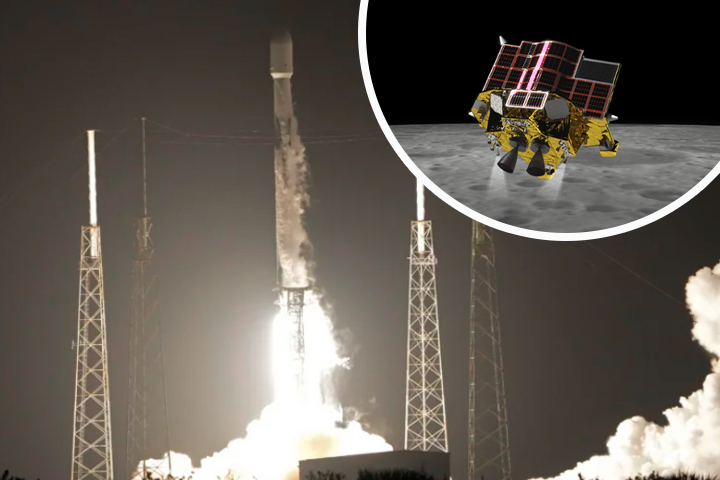


Japan made history by being the fifth country to land a spacecraft on the moon.
At around 12:20 a.m., the Smart Lander for Investigating Moon (SLIM) landed. On January 20, Tokyo time (1520 GMT January 19), the Japanese Aerospace Exploration Agency reported.
It took many hours for mission control to get word that the landing was successful, if not entirely successful.
“The Japan Aerospace Exploration Agency (JAXA) confirms that the Smart Lander for Investigating Moon (SLIM) successfully landed on the moon surface on January 20, 2024, at 0:20 am (JST). Communication with spacecraft has been established after the landing,” JAXA said in an official statement. “However, the solar cells are currently not generating power, and priority is given to data acquisition from the SLIM on the moon. Detailed analysis of the acquired data will be conducted in the future, and we will continue to share any updates on the situation.”
Head of Japan's space agency's Institute of Space and Astronautical Science Hitoshi Kuninaka said his team believes the rovers on board the lander were deployed, but the batteries can only run the lander for a few hours due to a lack of solar panels.
Nevertheless, he believes that the soft landing was only "minimally" successful.
Japan has now joined an exclusive group of countries that also includes the US, the USSR, Communist China, and India.
Launched on an HII-A rocket from Tanegashima Space Center in southwest Japan with the X-Ray Imaging and Spectroscopy Mission (XRISM) satellite, SLIMMA was not expected to reach lunar orbit for several months. It was launched in September 2023, less than six months after the crash-landing of a private Japanese moon lander, which was reportedly caused by software issues.
In order to use the probe to investigate the Moon's origins and test the giant-impact theory—which holds that the Moon was formed when the Earth collided with a small planet roughly the size of Mars—JAXA was aiming for a "pinpoint" landing close to the Shioli crater.
The mission's primary goal was to test JAXA's new landing technology, demonstrating that it can land spacecraft "where we want to, rather than where it is easy to land." SLIM's landing zone was just 330 feet (100 meters) wide, compared to typical landings that aim for landing zones six miles (10 km) in size. It is still unclear to officials if a "pinpoint" landing was accomplished.
The mission is being conducted a few days after the United Launch Alliance (ULA) Vulcan rocket from Cape Canaveral Space Force Station in Florida launched the unmanned lunar lander Peregrine. Shortly after, the private American company Astrobotic Technologies announced a catastrophic fuel leak.
As part of the Artemis project, which aims to create a permanent presence on the Moon, JAXA and NASA are working together.
“The main goal of the ultimate program is to establish a human presence,” said Sasaki Hiroshi, JAXA Vice President and Director General for Human Spaceflight Technology Directorate, during a pre-landing live stream, according to a translator. “While doing so, Japan will be contributing more on the robotics. And the first one is the crewed mission that will be setting foot on the lunar surface. And also another one we’ll be sending pressurized rover for driving on the lunar surface.”